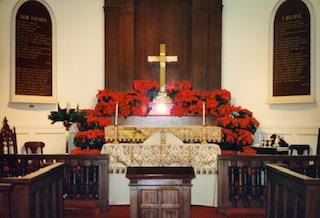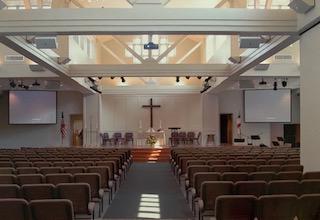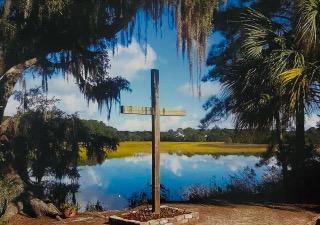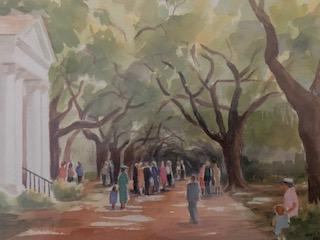Virginia Bartels entertains and educates with historical context for current-day worship
- Prioleau Alexander
- Apr 1, 2021
- 3 min read
Updated: May 5, 2021
By Prioleau Alexander
Saint James Church: Worshipping in the Presence of the Past: 1720-2020
By Virginia Brown Bartels
Softbound 376 pp.
$35.00
(Dorrance Publishing Co., Pittsburgh, 2020)

A painting of Saint James Church, entitled "Sea Island Glory," by local artist Jim Booth, featured on the cover of the book.
In writing Saint James Church, the author sets out to tell the true story of the history, leadership, societal changes, growth and Christian accomplishments of St. James Church, one of Charleston’s oldest parishes located on James Island. She does so in spades.
The task Mrs. Bartels assigned to herself is epic, with 270 pages of content and another 90 pages of footnotes and addendums. Not only is it clearly a labor of love, it is told lovingly by an author committed to capturing the real and complete story of this historic church.
Particularly fascinating are the stories of St. James during the years of its founding, the Revolutionary War, the War Between the States, the Roaring 20s, the Great Depression, World War II and the church’s leadership role in the civil rights movement. Obviously these are the areas where Mrs. Bartels most clearly demonstrates her chops as a history sleuth, but it’s also where she demonstrates her skill at conveying facts via engaging and interesting stories.

The early days of Saint James Choir, whose members are discussed in the book.

Saint James Choir in April 2018 at the Evensong for Persecuted Christians.
Early in her book, Mrs. Bartels writes, “Charles Town and James Island were caught by surprise by a horrendous hurricane in September 1752, bringing a storm surge ten feet above average tides and swelling the creeks. Some city residents were up to their necks in churning water amid pieces of wrecked ships; others rode on a rooftop floating in the Cooper River. Fifteen people died during the hurricane, and additional deaths occurred on James Island and in Mt. Pleasant.”
The book includes many other fascinating facts that span decades of history:
Only five out of 23 Anglican priests stood by the crown during the Revolutionary War.
One of the church’s early leaders was castigated by those in his Presbyterian congregation for swearing, dancing and overimbibing … so he joined St. James, “where the strictures on social life were less exacting.”
In recording the congregants who served under the Stars and Bars, a Mr. William Hinson wrote in his manuscript a unique title for the war — stating that the names reflected the men who “enlisted on the side of Southern liberty in the war of 1861.”
And under the thumb of Reconstruction, the average pledge per communicant for the 43 diocesan churches was a mere 51 and a half cents.
The altar of Saint James decorated at Christmas (left) and the interior of the ministry chapel (right).
As the timeline draws closer to today, and more information is available, Mrs. Bartels expands her level of detail, increasing the appeal to a wider range of Anglicans. She offers an excellent explanation of the split from the National Episcopal Church and covers a variety of topics obviously dear to her heart: St. James’ mission work, youth programs, the parish cookbook and community outreach. All of these items could prove helpful to another church seeking fresh ideas.
I applaud Mrs. Bartels commitment to this project, which should serve as a roadmap for other writers who feel called to pursue such a literary adventure. We cannot help but offer the highest praise one Christian can bestow on another: Well done, good and faithful servant.
The book features an insert including art by locals and parishioners.



































